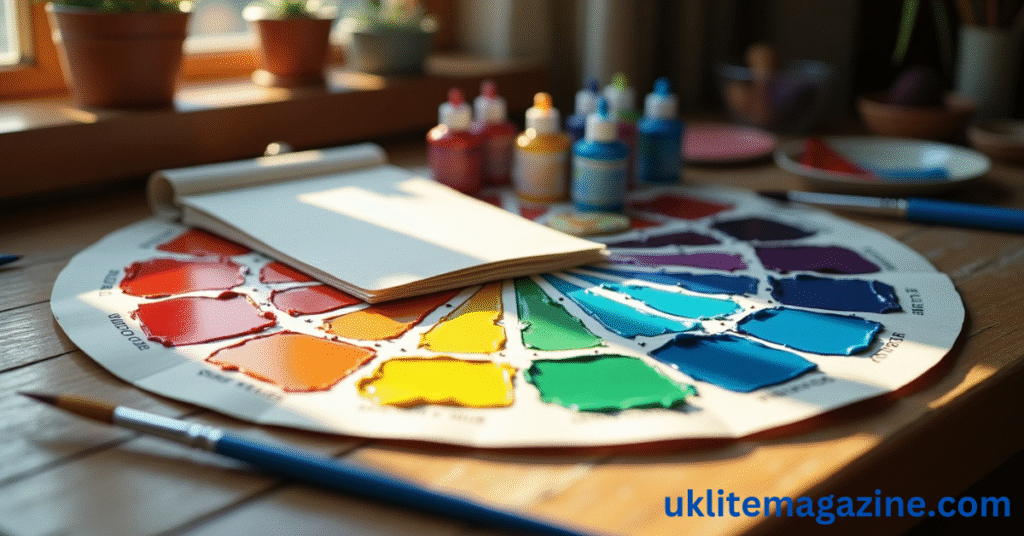Understanding how colors work is essential in art, design, printing, and digital creation. One of the most common questions beginners ask is: What colors make blue? The answer may surprise you—blue is a unique color in color theory and doesn’t behave the same way as secondary or tertiary colors.
In this article, we’ll explore how blue is treated in different color systems, why it cannot be mixed traditionally, and how digital color models handle blue. By the end, you’ll have a clear understanding of blue’s place in color theory.
Introduction to Color Theory
Color theory is the science and art of using color. It helps artists, designers, and creators understand how to mix, match, and apply colors effectively.
There are three main types of colors in basic theory:
-
Primary colors: Red, Yellow, Blue (RYB model)
-
Secondary colors: Made by mixing two primary colors (e.g., red + yellow = orange)
-
Tertiary colors: Made by mixing a primary and a secondary color
Can You Mix Colors to Make Blue?
The short answer is no—you cannot mix other colors to create pure blue using traditional paints or pigments. Blue is a primary color in the RYB (Red, Yellow, Blue) model, which is most commonly taught in art classes.
This means blue exists on its own and cannot be formed by combining other colors. Unlike green (blue + yellow) or purple (red + blue), blue has no components that blend into it using standard pigments.
Different Color Models and Blue
To get a full picture, it’s helpful to compare how blue is used in different color models. Here’s a breakdown:
How Blue is Treated in Different Color Models
| Color Model | Primary Colors | Is Blue a Primary? | Can You Mix Blue? | Used In |
|---|---|---|---|---|
| RYB | Red, Yellow, Blue | Yes | No | Traditional painting/art |
| RGB | Red, Green, Blue | Yes | Yes (in light mixing) | Digital screens/displays |
| CMYK | Cyan, Magenta, Yellow, Black | No (uses cyan) | Blue is created from cyan & magenta | Printing and publishing |
RGB Model (Digital Color Mixing)
In the RGB color model, which is used for digital displays, blue is one of the three primary colors of light. Here, blue can be used directly or mixed with red and green light to create various hues.
For example:
-
Red + Blue = Magenta
-
Green + Blue = Cyan
Though you don’t “create” blue in RGB, you do use it to mix other colors.
CMYK Model (Used in Printing)
In the CMYK model used in printing, blue is often created by mixing cyan and magenta inks. This results in a blue-like color, though not the pure blue found in the RGB or RYB models.
Why the Confusion?
The confusion arises because blue is treated differently across color systems. While it’s a primary color in RYB and RGB, in CMYK it’s derived from mixing.
Beginners often try to mix blue using paint or pigments, which doesn’t work because blue cannot be formed from red or yellow. This is why understanding the color model you’re using is important.
Color Mixing Tips for Beginners
-
Use a color wheel: It helps visualize which colors are primary, secondary, and tertiary.
-
Understand your medium: Whether you’re painting, printing, or designing digitally, each system handles blue differently.
-
Buy a true blue pigment: In painting, if you want pure blue, purchase a blue pigment like Ultramarine or Phthalo Blue.
Conclusion
So, what colors make blue? In traditional color theory, none—blue is a primary color and cannot be created by mixing others. However, in printing (CMYK), blue-like colors can be made by mixing cyan and magenta. In digital formats (RGB), blue is a fundamental component of color itself.
Understanding how different models treat blue helps you make better choices in art, design, and digital work.
Frequently Asked Questions (FAQs)
Q1: Can I mix paint colors to get blue?
No. Blue is a primary color in paint-based models like RYB and cannot be made by mixing other paints.
Q2: What colors make blue in printing?
In the CMYK model, blue shades can be made by mixing cyan and magenta inks.
Q3: Why can’t blue be made from other colors?
Blue is considered a basic or primary color in traditional color theory, meaning it has no components to mix from.
Q4: Is blue always a primary color?
Not always. In some digital systems or scientific models, variations of blue are mixed, but in traditional art, it remains a primary.
Q5: Can I use black and white to make blue?
No. Adding black or white only changes the tone of a color. They cannot be used to create blue from scratch.

